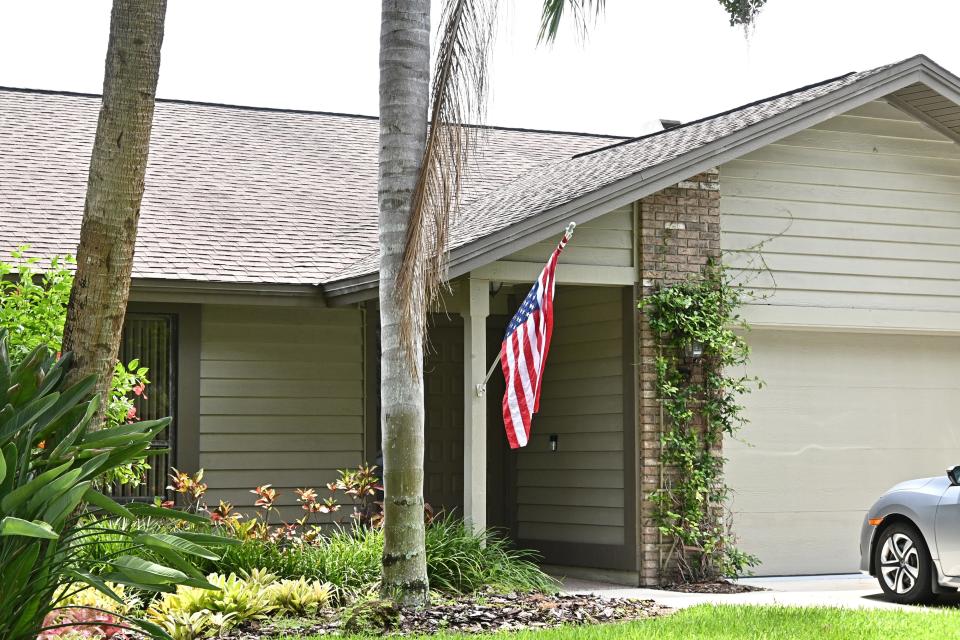We're free to hang American flags upside-down. But it’s against what it stands for.
The kerfuffle this week over an upside-down American flag hanging in the yard of Sarasota Memorial Hospital board member Victor Rohe, was the latest instance of an inverted display of our national symbol, including by a member of the U.S. Supreme Court. (Or rather, if you ask Justice Samuel Alito, his wife.) But neither the display nor the response to it was a novelty.
A flipped American flag was originally used by sailors as a maritime signal signifying a ship experiencing a dire emergency. But over nearly two centuries it has also been used as a political statement, adopted by critics on either end of the political spectrum to protest a multitude of issues – from slavery, the Vietnam war and gun violence to police profiling and abortion rights.

I wrote about a similar flap four years ago, when a Sarasota County resident was ordered by his condominium association to remove an upside-down flag displayed on a pole alongside his driveway.
In that case, Rich Roberts said he had “deliberately” inverted the 48-star version in advance of the contentious 2020 election because he believed, after four years of President Donald Trump's administration, “Our ‘ship of state’ is in serious distress.’” (Roberts took down the flag after being threatened with fines by the condo association.)
Most recently, however, the use of an inverted flag has become more associated with the Jan. 6 insurrection and partisan extremists on the far right, who also display the upright flag in ever-greater numbers and sizes on every occasion associated with their political cause.
At its most extreme, this results not just in head-to-toe red, white and blue attire, but memorabilia from t-shirts and coffee cups to banners and ball caps printed with derogatory or profane critiques of the current administration into which a flag image is incorporated. (Remember “I [heart] New York”? Now it’s “F[flag]K Joe Biden.”)
In fact, so prominent have the stars and stripes become in these supporters’ yards, on their pickup trucks and at their rallies (where the former president once murmured, “I love you, baby” while fondling the striped material) that it has made those on the other end of the spectrum shy away from displaying the flag at all. This, of course, instantly gets them labeled as “unpatriotic” by the self-proclaimed “ultra patriots.”
Those on the left shy away from overt flag displays not only out of fear they will be identified with their political opposites, but because they feel grandstanding the national banner doesn’t acknowledge painful chapters of the country’s history they’ve long found concerning. They lean more toward displaying alternate flags representing those they feel have been historically excluded (racial minorities and other marginalized populations); their yards tend to feature signs with rainbow colors and words like kindness, peace, equality, inclusion and love.
The flag-wavers on the right emphasize “freedom” (especially individual freedoms), while those on the left focus on threats to “democracy” (and the need for shared responsibility).
The two words have been weaponized to appear oppositional, but in fact they are not only compatible, but both integral to the American governmental system and way of life. That we have the freedoms we do is based on the premise that such freedoms can only exist within a government that maintains laws granting those same inalienable rights to every citizen.
The fact that it is legal to fly the U.S. flag upside down at all speaks to the remarkable freedom of expression we have in this country. But co-opting our national symbol to wage political battles, slam current leaders or antagonize others to divisive effect runs counter to what it is meant to stand for.
It is possible – indeed, probable – to love our country and at the same time to rage against its faults. Holding these contrary emotions at once doesn’t represent disloyalty, but rather acceptance of the challenges and responsibilities of living in a democratic society; we can feel conflicted even as we remain staunchly proud Americans.
Seeing the flag should stir hope, promise and possibility; it should recommit us to becoming a better America. While we’ve been busy out-patriotism-ing each other with our flag waving, we’ve lost sight of the charge John F. Kennedy delivered in his 1961 inaugural address when he advised to, “Ask not what your country can do for you – ask what you can do for your country.”
What have you done lately?
To be honest, it is not a waving flag that stirs my most patriotic emotions. I have come closer to tears watching an American take a gold medal at the Olympics; felt my heart swell while singing “Take Me Out to the Ballgame” during a seventh-inning stretch; and thanked my birth roots while watching cowboys with names like Bronco and Chance perform at a small-town rodeo on the 4th of July.
I’ve never owned a piece of clothing with a flag emblem or fabric that mimicked its stars and stripes, not because I am not filled with national pride, but because I’ve always thought it would feel somewhat disrespectful to relegate it to the dirty laundry pile at the end of the day.

Tired of obnoxious political mailers? Venice offers a smart approach to reducing them.
Does this make me any less patriotic than my neighbor whose yard is littered with the abandoned red, white and blue remains of a Memorial Day display?
The history of our nation is complex and contradictory and there is plenty of baggage associated with it that will always be worth working to improve.
But there are better ways to express our disappointments and discuss our disenchantments than to use our national symbol for political proselytizing. The flag should represent the best in us; our optimism, our can-do spirit, our compassion, our inclusiveness, our United States of America.
The American flag belongs to no one. It belongs to us all.
Contact Carrie Seidman at carrie.seidman@gmail.com or 505-238-0392.
This article originally appeared on Sarasota Herald-Tribune: Hanging upside-down American flag in Sarasota furthers divides

